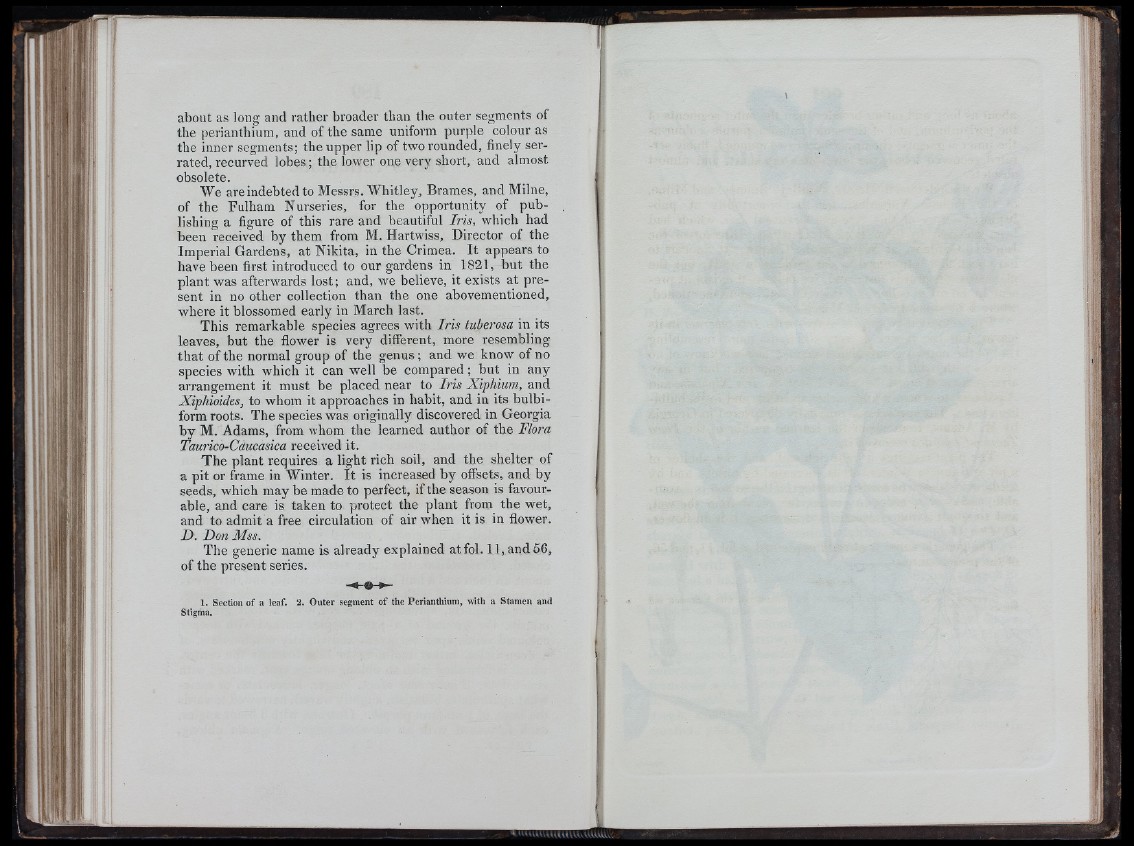
about as long and rather broader than the outer segments of
the perianthium, and of the same uniform purple colour as
the inner segments; the upper lip of two rounded, finely serrated,
recurved lobes; the lower one very short, and almost
obsolete.
We are indebted to Messrs. Whitley, Brames, and Milne,
of the Fulham Nurseries, for the opportunity of publishing
a figure of this rare and beautiful Iris, which had
been received by them from M. Hartwiss, Director of the
Imperial Gardens, at Nikita, in the Crimea. It appears to
have been first introduced to our gardens in 1821, but the
plant was afterwards lost; and, we believe, it exists at present
in no other collection than the one abovementioned,
where it blossomed early in March last.
This remarkable species agrees with Iris tuberosa in its
leaves, but the flower is very diflerent, more resembling
that of the normal group of the genus ; and we know of no
species with which it can well be compared; but in any
arrangement it must be placed near to Iris Xiphium, and
Xiphioides, to whom it approaches in habit, and in its bulbi-
form roots. The species was originally discovered in Georgia
by M. Adams, from whom the learned author of the Flora
Taurico-Caucasica received it.
The plant requires a light rich soil, and the shelter of
a pit or frame in Winter. It is increased by offsets, and by
seeds, which may be made to perfect, if the season is favourable,
and care is taken to protect the plant from the wet,
and to admit a free circulation of air when it is in flower.
D. Don Mss.
The generic name is already explained at fol. 11, and 56,
of the present series.
1. Section o f a leaf. 2 . O uter segment o f the Perianthium, with a Stamen and
Stigma.